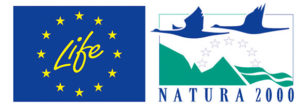
LIFE Wetlands4Climate seeks to establish guidelines for the management of Mediterranean wetlands to foster their capacity as carbon sinks while maintaining their ecological integrity and function so they can continue to provide all the services of a healthy ecosystem.
This study seeks to demonstrate that this habitat – one of the most sensitive and threatened in the European Union – can be managed in a way that generates multiple partnerships and opportunities for socioeconomic development in the rural environment.
Maximise the carbon sequestration capacity of Mediterranean wetlands and reduce their GHG emissions – and in particular the emissions of those gases that have the greatest capacity to generate global warming, such as methane – through wetland conservation and management that focuses on climate change mitigation..
Transfer lessons learned in wetlands management to other Mediterranean wetlands in Europe and the rest of the Mediterranean region, making use of the management parameters and climate change indicators obtained from other wetlands with similar characteristics.
Contribute to achieving the Paris Agreement goals through better management and conservation of the EU’s wetlands.
Involve the private sector in financing climate change mitigation and adaptation measures with a focus on water and wetland management.
Integrate wetlands management and conservation into EU objectives on climate change mitigation and biodiversity conservation.

The project will contribute to achieving two of the EU’s strategic objectives:
Climate change: reduce GHG emissions by 40% by 2030.
Biodiversity: restore at least 15% of degraded ecosystems with measures centred on rewetting and protecting wetlands.

LIFE Wetlands4Climate provides a method of quantifying carbon exchanges and GHG emissions between aquatic ecosystems and the atmosphere, proposing climate change mitigation measures based on wetlands management. The project also contributes to implementing climate policy on Land Use, Land-Use Change and Forestry (LULUCF), generating data on carbon sequestration in wetlands and the management methods that favour it.
Management methods also impact climate change adaptation since they address the restoration of wetlands, increasing their resilience to climate change. This project clears a path to maximising the carbon sequestration capacity of Mediterranean wetlands of various types, whether freshwater, saline or coastal, using specific management measures aligned with conservation interests. The project also proposes mechanisms for allowing private initiative to voluntarily sign up to this mission to multiply the benefits of conserving biodiversity and mitigating climate change.
At the legislative level, the EU Water Framework Directive (WFD) and Birds and Habitats Directives agree on the need to keep wetlands in good condition, ensuring the ‘good ecological status’ of water bodies in line with the provisions of the WFD and conserving the habitats and species included in the Birds and Habitats Directives.
The project contributes to establishing a better methodology for Mediterranean wetlands management with the additional layer of environmental decision-making required to achieve the goals set out in the Paris Agreement on climate change. The project will introduce wetlands managers to the huge potential for carbon sequestration offered by wetlands when they are properly managed, a quality underestimated in climate change policy in the past.
El proyecto “Gestión y restauración de humedales mediterráneos como sumideros de carbono – LIFE Wetlands4Climate (LIFE19 CCM/ES/001235) está cofinanciado por el Programa LIFE de la Unión Europea

Las opiniones y documentación aportadas en esta publicación son de exclusiva responsabilidad del autor o autores de los mismos, y no reflejan necesariamente los puntos de vista de la Comisión Europea.
Política de Privacidad
Política de Privacidad en Redes Sociales
Política de cookies

Nos dedicamos a la conservación de la naturaleza
C/ Tajo, 2, 28231 Las Rozas (Madrid)